We include products in articles we think are useful for our readers. If you buy products or services through links on our website, we may earn a small commission.
What is the Best Way to Fast?
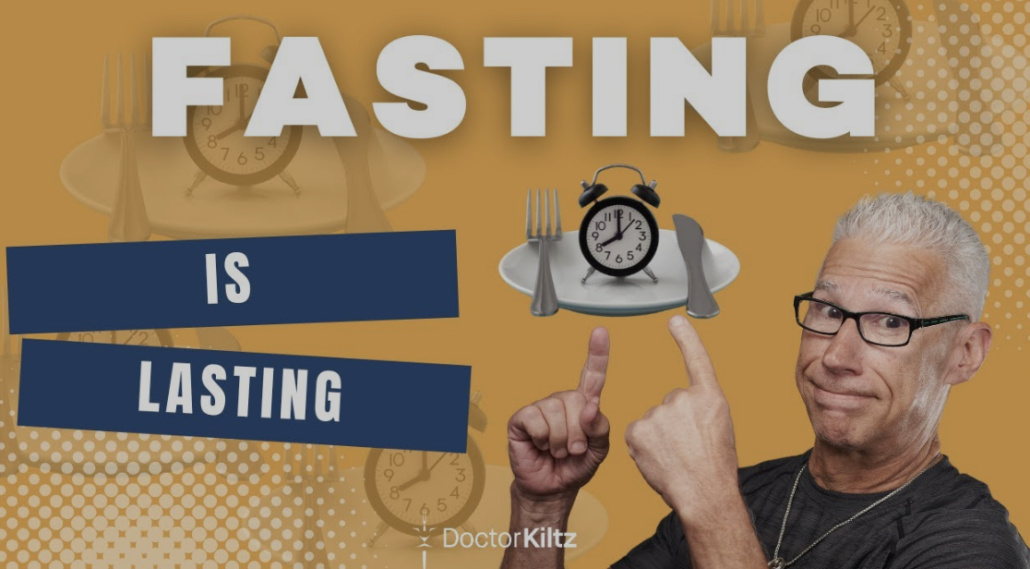
Amidst a sea of fasting methods, you may wonder, “What is the best way to fast?”
Fasting is a historical practice making a modern resurgence, offering benefits as wide-ranging as weight loss, mental clarity, protection against cognitive decline, reduced inflammation, and enhanced immune function.
But since the benefits of fasting change according to the duration of the fast, certain methods will yield greater benefits than others.
When determining the best way to fast there are a number of factors to consider, including your body type and metabolism, health goals, and activity levels.
That said, for most people, One Meal a Day (OMAD) may be the most effective option. OMAD shines with its straightforward principle: fulfilling daily nutrition in a single meal and fasting the rest of the day.
In this article, we will explore OMAD and other fasting methods, highlighting the science, benefits, and best considerations when finding the best way to fast for you.
Table of Contents
Finding the Best Way to Fast
Though there are numerous factors to consider when determining the best way to fast, there is one variable that applies to everyone: Time!
The benefits of fasting change by the hour. And, generally speaking, the benefits increase with the duration of a fast.
However, you can only undertake prolonged fasts of 24 hours to 5 days occasionally. This means that for most people, the most consistent benefits of fasting will come from sustainable daily fasts with the longest fasting duration.
This brings us to OMAD, or One Meal a Day. With OMAD you consume all of your calories within a 1-2 hour time window. So, though it’s one meal, you don’t have to scarf it all down in a normal 20 minute eating window.
We’ll dive deeper into OMAD later, but for now, let’s touch on a few other factors when determining the best way to fast.
Lifestyle
Most people do great eating one large meal a day. But some people are so busy that they simply need to split their caloric intake into two or even three meals.
Hard training athletes often need to do a modified version of OMAD, where they consume one meal a day while also allowing themselves to replenish after hard workouts, but still within an intermittent fasting window.
Trial and Adaptation
Coming from a standard American diet of three high-carb meals plus snacks in between may take some adaptation.
Many people find a sustainable path into intermittent fasting by starting gradually with a 16/8 fasting schedule and working their way up to OMAD with the addition of prolonged 24-72 hour fasts once a month.
Listen to Your Body
Pay attention to the signals your body is sending you. If you’re feeling excessively hungry, fatigued, or anxious, you may need to change your fasting window.
However, if you’re having difficulty fasting, you likely need to update other associated lifestyle factors. This means fueling up before and after a fast with nutrient-dense whole foods, cutting out all processed foods, cutting alcohol consumption, getting more physical activity, and being sure to stay hydrated.
The best way to fast isn’t just about when you eat. It’s equally dependent on what you eat and how you move your body.
OMAD
As we touched on above, OMAD, or “One Meal a Day,” provides a combination of sustainability and fasting duration. You can practice it daily while inducing the greatest degrees of cellular renewal and fat burning.
For this reason, OMAD is one of Dr. Kiltz’s three pillars of health and wellness and a key to his BEBBIS diet.
Getting all of your daily calories and nutrients during a single 1-2 hour feeding period means that you have to consume extremely nutrient-dense foods. This is one of the hidden powers of OMAD–a built-in necessity to consume the world’s healthiest and most beneficial foods like fatty steak, eggs, butter, fish, and cheese.
The combination of feasting on extremely nutritious animal-based foods and fasting for extended periods of time between meals re-aligns our physiology with our ancestral eating patterns.
Research shows that for the vast majority of human evolution, humans consumed a hyper-carnivorous diet of large, fatty animals and fasted between successful hunts.
Our DNA is nearly identical to that of our hunter-gatherer ancestors, and therefore, our bodies and brains are primed for these eating patterns. We can see this propensity in the many studied benefits of fasting, including
- Enhanced fat loss
- Protection against neurodegenerative diseases like dementia, Alzheimer’s, and Parkinson’s disease
- Improved cognitive performance
- Increased HGH (human growth hormone)
- Increased BDNF, AKA “miracle grow for the brain.” This hormone stimulates the creation of new neural networks aiding in learning and memory
- Autophagy. A critical process of cellular repair and renewal that protects the body from various diseases, viruses, and bacterial infections.
- Reduced inflammation
- Activation of gene expressions linked to longevity
Most people who practice OMAD consume their meal before sundown in order to take advantage of the body’s circadian rhythm. This is your internal biological clock that activates different physiological processes in correspondence with natural light and dark cycles.
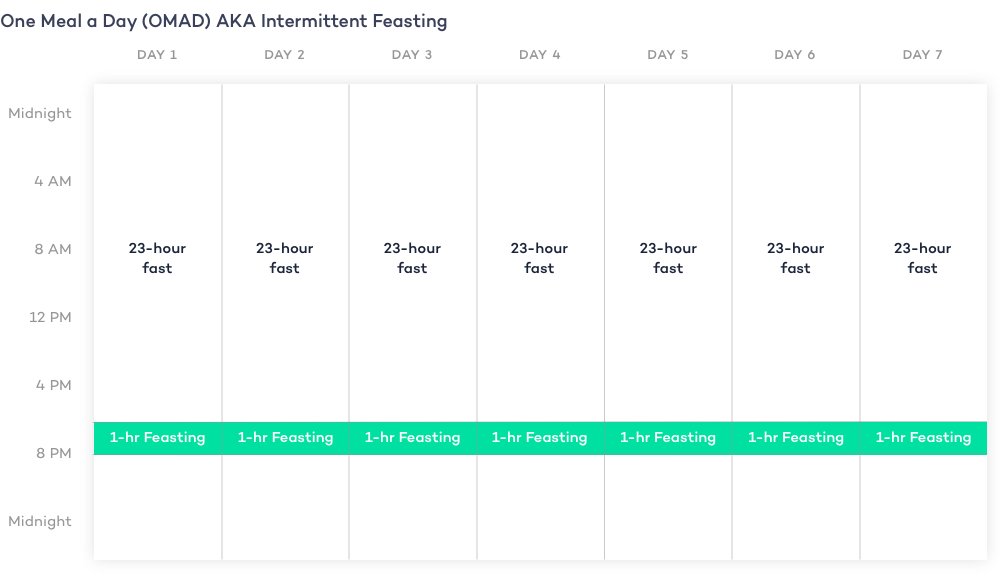
Research shows that restricting calories overnight is key to activating autophagy, a prime factor in many of the benefits of fasting.
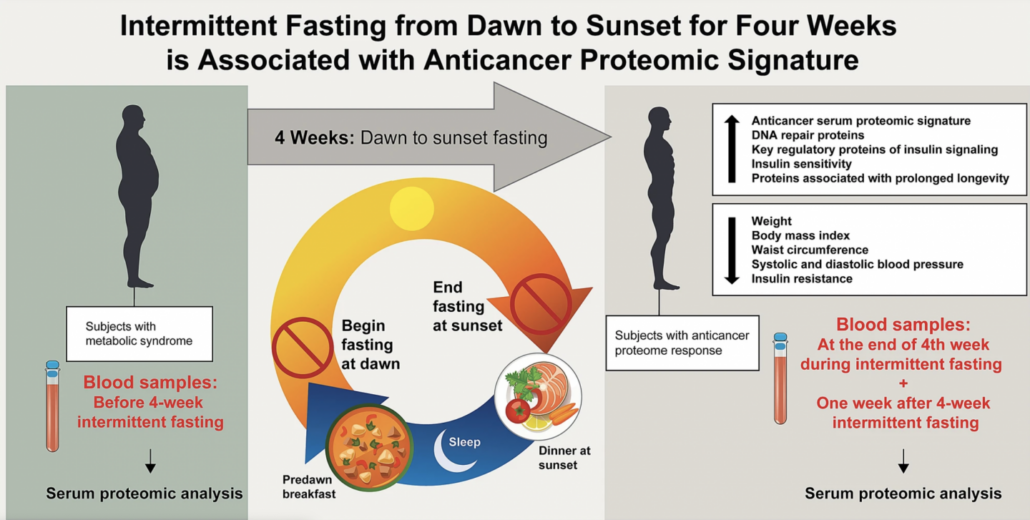
Source: Mindikoglu, A.L., Abdulsada, M.M., Jain, A. et al. Intermittent fasting from dawn to sunset for four consecutive weeks induces anticancer serum proteome response and improves metabolic syndrome. Sci Rep 10, 18341 (2020)
Though OMAD is the most effective and sustainable, and therefore the best way to fast for most people, there are a few other popular approaches that work better for some people. We’ll turn to these now.
Time Restricted Eating and the 16/8 Fast
Time-restricted eating (TRE) encompasses short-term intermittent fasts from 12 to 20 hours.
This includes the popular 16/8 fast. TRE requires that you consume your calories within daylight hours and that you fast overnight.
16-18 hours is the minimum amount of time required to activate mild autophagy. At the same time, this approach provides your digestive system with an opportunity to clear its contents and heal damaged tissue and mucosal lining.
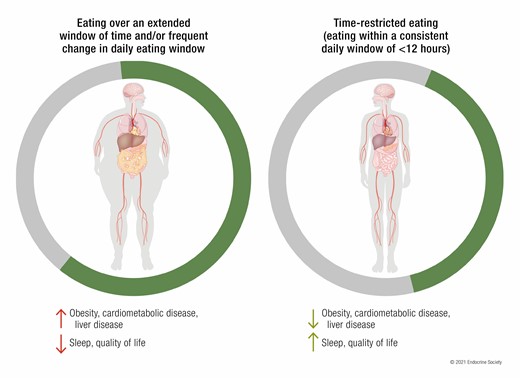
Source: Emily N C Manoogian, Lisa S Chow, Pam R Taub, Blandine Laferrère, Satchidananda Panda
Endocrine Reviews, First published online September 22
24 Hour Fast
24-hour fast, also known as “eat stop eat,” activates deep autophagy and fat burning, and may be a good fit for hard training athletes who need to eat more often on most days, but still want to activate the benefits of fasting on rest days.
24-hour fasting periods typically start at sundown on the first day and end the following day at the same time.
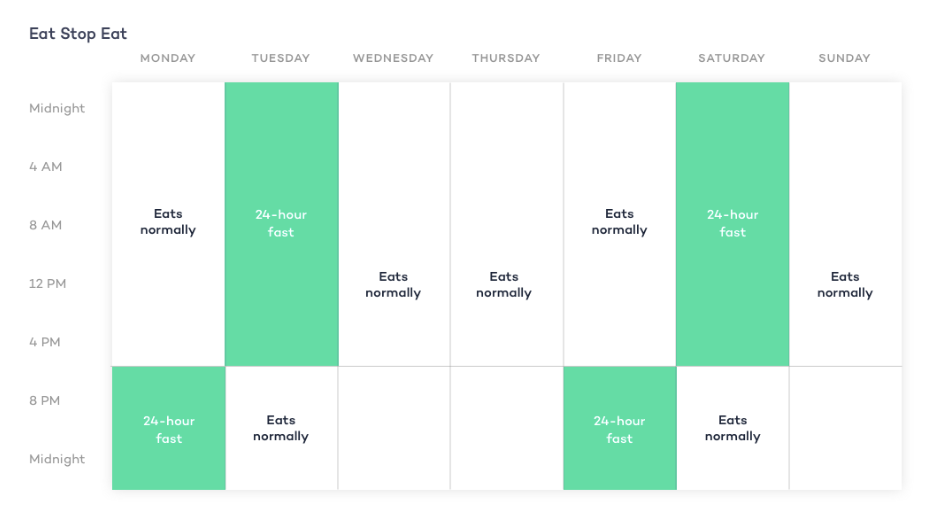
The 24-hour fast is one of the most studied durations, which is a testament to the fact that it induces significant and easily measurable changes in metabolism, cellular renewal, and gene and hormone expression.
People practicing OMAD often add in a 24-36 hour fast once in a while to deepen the effects of their fasting regimen.
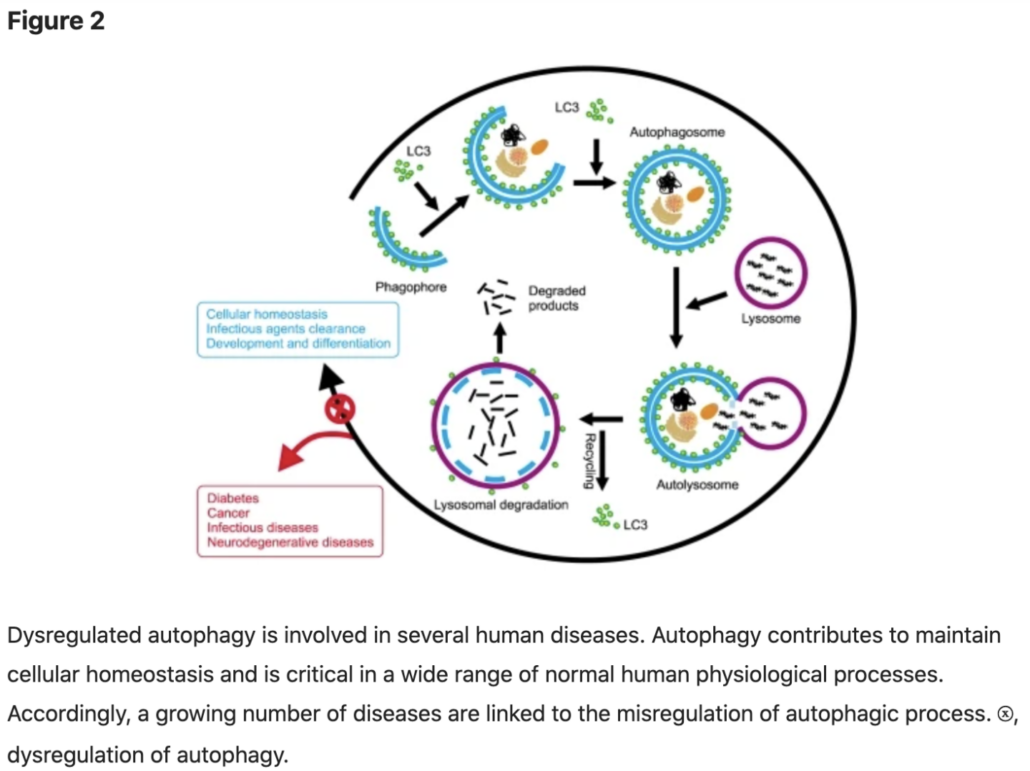
Source: Jing, K., Lim, K. Why is autophagy important in human diseases?. Exp Mol Med 44, 69–72 (2012)
24-hour fasts have been shown to activate the growth of stem cells in the intestines that repair leaky gut while reducing inflammation due to autophagy and the reduction of various inflammatory cells.
The Best Way to Fast: The Bottom Line
Of the many ways to fast, the best way for most people is a daily intermittent approach that provides the longest possible fasting period.
That leads us to OMAD, or One Meal a Day, which calls for consuming all your daily calories within a 1 to 2-hour eating window.
Extending the fasting period beyond 18 hours ensures that your body enters a deep fat-burning metabolic state while activating the vital process of cellular renewal and repair called autophagy.
Other methods that may be best for some people include the gentler 16/8 method and the more intensive but less frequent 24-hour fast.





















